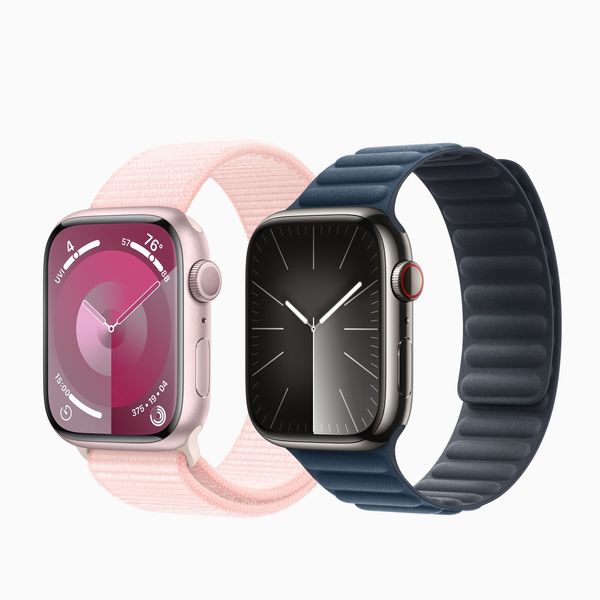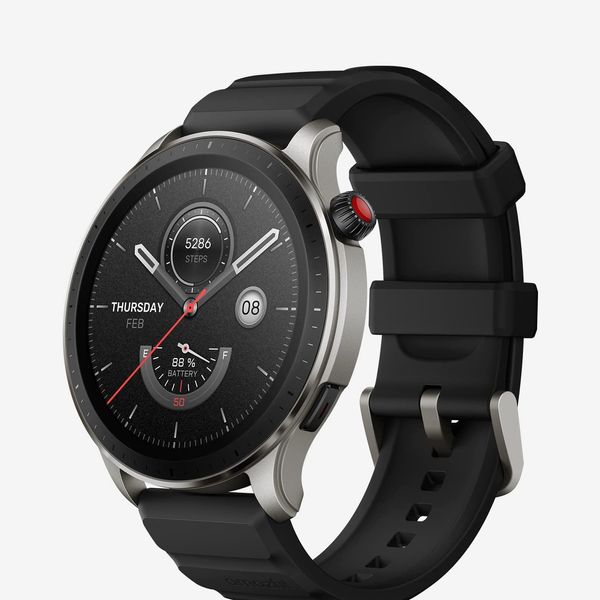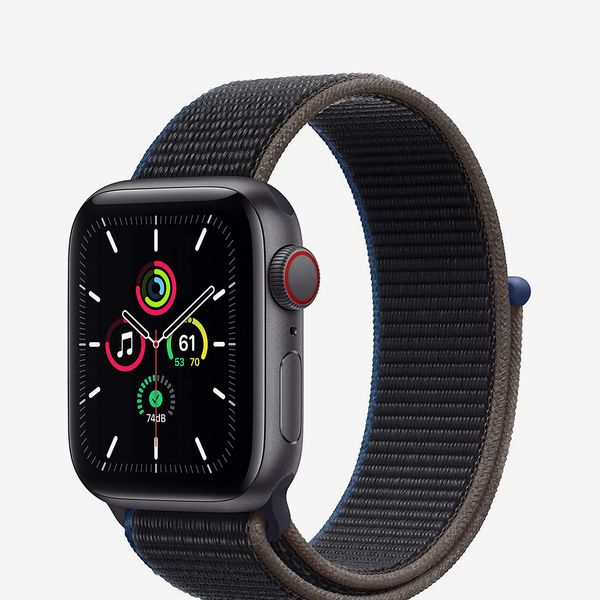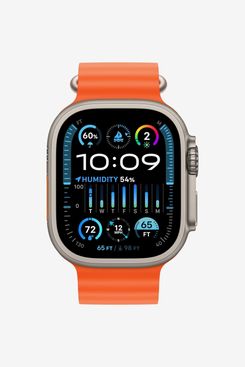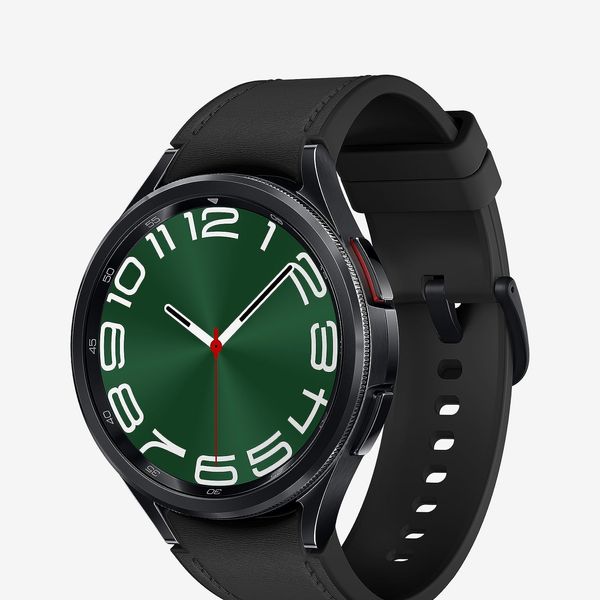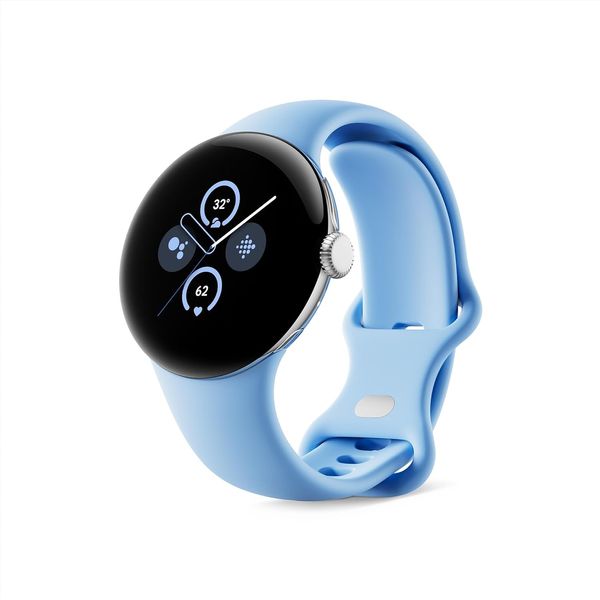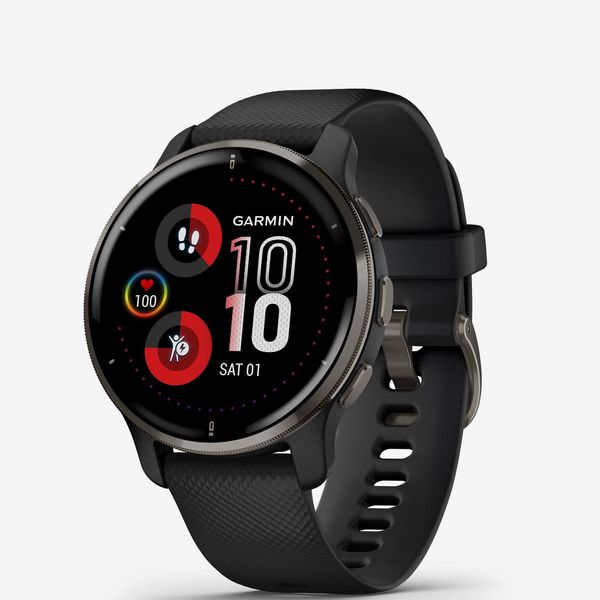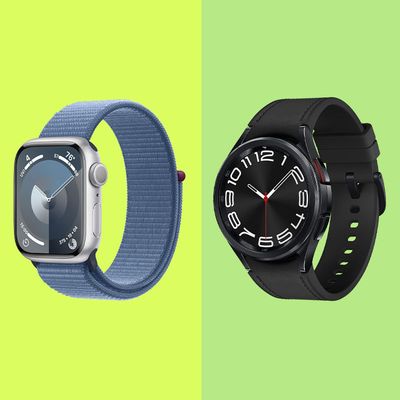
In this article
I’ve been using a smartwatch since 2015, when my sister gifted me the first Apple Watch. At the time, I liked its convenience, but now I struggle to imagine my life without a smartwatch. In addition to being an excellent fitness tracker, I’ve made it part of my day. I use voice input to jot down quick notes and ideas, and even when I’m just doing chores around the house, it’s the easiest way for me to skip or favorite tracks on Spotify as I blitz through my tasks.
To be honest, if you’re just looking for basic tracking for workouts and sleep, you may be better off with a more affordable fitness tracker. But smartwatches can not only do everything fitness trackers do, they also provide some of the functionality of your phone. They can even be used without your phone to make/receive calls and respond to texts if you need to run a quick errand (though you’ll need it to sync things or have a cellular plan for your watch), download music for offline playback, and mirror your phone’s notifications so you don’t have to reach into your pocket for every ping. Most smartwatches can also download third-party apps, like Strava or a sleep tracker to make sure you’re getting enough rest, from an App Store, as well as let you make contactless payments, and pair with Bluetooth headphones. Most fitness trackers don’t offer all those features in one package.
Picking a smartwatch isn’t as simple as buying the best-looking or most feature-packed one you can find. In addition to finding a stylish design that matches your wardrobe, you’ll want one that has the right health tracking features for you, and one that integrates well into your smartphone’s ecosystem. To make things easier for you, I tested nearly every flagship smartwatch available over the course of four months. I also spoke with a marathon runner, a smartwatch reviewer, and a fitness writer to make sure I wasn’t leaving any stone unturned. Whether you’re a fitness enthusiast or just looking to spend a little less time looking at your phone.
What we’re looking for
Platform support
Every time I think about switching to Android, I remember how tethered my life is to the Apple Watch now. Over the past few years, the big three companies in the smartphone space — Apple, Samsung, and Google — have started treating smartwatches as a way to further lock you into their respective platforms. Victoria Song, smartwatch reviewer at The Verge, says that approach makes things tricky for consumers. “Your smartwatch has a very close relationship to your phone because it’s there to make you look at your phone less, and if it’s not a standalone device you’re more tied to your phone,” she says, “so think about how married you are to your phone and its ecosystem; that’ll tell you which smartwatch is best for you.”
Thomas Watson, editor and running coach at Marathon Handbook, echoes that sentiment. “It’s also a big deal because there’s a big switching cost if you change devices. If you’ve used one platform for a couple of years, you’ve built up swathes of personal health and fitness data on that platform,” he says, “Changing to another manufacturer will probably mean you can’t port all that information straight over, and may lose it.” The solution, he suggests, is to think long-term about what brand you’ll still be happy with in a few years, and which one you’ll trust with all your health data.
Given the commitment a smartwatch requires, that sort of longevity is important. The latest Android-friendly smartwatches from companies like Samsung will have a Samsung Exynos W930 dual-core 1.4GHz processor . To avoid having your new smartwatch left in the dust when new features arrive, Song suggests staying clear of watches with anything but the newest chip, even if you can find one for a good discount. She also recommends paying attention to the watches that have a third-party app ecosystem (an app store that’ll let you download apps like Strava or Spotify), as they’ll offer more capabilities than a watch without one.
If you like to keep all your personal data close to the chest, a smartwatch probably isn’t for you, Song says. Even an Apple Watch, with all of Apple’s promises of protecting your personal data, can’t protect you once you hand that data over to a third party like Strava or Peloton. “Once you use their HealthKit api with another app, all bets are off,” Song says, “Apple doesn’t have control over what that third-party does with your data.”
Health and fitness tracking
Most smartwatches these days flaunt pretty robust capabilities for tracking workouts and overall health. Companies like Apple and Samsung highlight features like ECG (electrocardiogram) and blood-oxygen monitoring, as well as sleep tracking and even fall detection. These flagship watches will have more health-related features than cheaper models, but for more serious monitoring like heart health, Song says those features don’t mean much, although she suggests making sure any watch featuring ECG capabilities be FDA-cleared.
Casey Johnston, author of the She’s a Beast newsletter, says tracking all that data can be useful for athletes training for specific cardio-based workouts, but that for regular people just looking to be a little more healthy, it can be more detrimental than helpful when taken too seriously. “Virtually all long-range studies on workout-tracking via smartwatches have shown that, while the tracking can be exciting and motivating feedback maybe at first, the feeling wanes for almost everyone,” she says, “Most people need a more personal or impactful reward than data in order to achieve long-term adherence to exercise.”
Watson agrees: “While this information is undoubtedly valuable, unless you’re competing for a podium position in your field and working with a coach who can interpret all the data, focusing too much of the myriad of metrics available can take your mind further away from where it should be: on the activity in hand.” With this in mind, I use my phone’s health data as a general point of reference to notice trends overtime, but don’t pay too much attention to the nitty gritty details.
Battery life
Flagship smartwatches — the ones with the latest features — can have a battery life ranging anywhere from 18 to 65 hours, depending on your usage and if there’s a low-power mode. Though Song says it’s hard to find a watch that’ll last longer than 24 to 36 hours, but you should look for a watch that lasts at least 24 hours and supports quick charging.
You should also look for a smartwatch that supports quick charging. If you only charge overnight, that might not seem like an important feature with a fresh watch, but batteries deteriorate over time and you’ll need to plug it in more often, so you’ll want a watch that’s with you for the long haul.
Water/dust resistance
Unlike smartphones, smartwatches don’t have the benefit of being protected by something like your pocket, bag, or a protective case. They’re exposed on your wrist all the time, leaving them more vulnerable to damage from falls, general clumsiness, or unfortunate weather.
Most smartwatches will come with an IP (Ingress Protection) rating, which indicates how resistant they are to water and dust. The higher the IP rating, the better the protection. The first part of the number, following the IP, tells you how resistant the watch will be to dust, while the second indicates protection levels against liquid, so a rating like IP67 tells you the device is totally protected from dust, and safe from water up to one meter. A rating like IPX7 indicates that the watch doesn’t have any protection against dust (and most people don’t need to worry about dust protection anyway). Some watches use the more traditional water-resistance rating, given in atmospheres (ATM) of pressure.
Screen size
The bigger your watch’s screen, the easier it’ll be to read at a distance. At the same time, bigger screens may look and feel more obtrusive on your wrist depending on your wrist size (I have fairly small wrists and even larger screens feel fine to me, so your mileage may vary). Smartwatch sizes range usually from 36 to 40mm for smaller wrists, while larger models can go all the way up to 45mm. The best thing to do, if possible, is to go into a store and see how each might look on your wrist before taking the plunge.
Cellular support
Many smartwatches offer both GPS-only and cellular models of their flagship smartphones. The Bluetooth-only models (sometimes labeled as the GPS model) can only receive notifications and new information when in close proximity to your phone, while the cellular options allow you to take a call from your wrist even if you’ve left your phone behind. Typically, though, you’ll need to pay an additional fee for your watch to access a cellular network, so keep that in mind.
Best smartwatch overall for iOS
Platform support: iOS | Health and fitness tracking: Blood oxygen, heart rate, and irregular heartbeat, ECG monitoring (FDA cleared), ovulation cycle, sleep cycle, fall and crash detection, and workout tracking for walks, runs, cycling, and strength training | Battery life: 18 hours (36 hours in low-power mode) | Water/dust resistance: IP6X | Display size: 42-mm. and 45-mm. models | Cellular support: Bluetooth only and cellular models
I’ve been using an Apple Watch since 2015, and it’s still my favorite option. The Series 9 is the latest version and came out in September. I’ve been using it for several months, and the experience is nearly identical to last year’s Series 8 (which I loved), but it has some minor improvements that’ll help it stand the test of time a bit longer. It has double the brightness of its predecessor (2,000 nits), new gesture-based controls that don’t require you to touch the screen, and Siri commands are now processed right on the device rather than sent to the cloud.
The Series 9 is truly a case of the best for most — whether you’re a fitness enthusiast, sleep-data nerd, or just someone who likes to check your notifications without pulling out your phone. For example, running coach Watson recommends the Apple Watch for anyone looking to casually track their data. “It tracks just about every type of workout you can imagine,” he says, including running, cycling, and strength training. “Then you’ve got all the ‘passive monitoring’ of all the activity and heart-rate data, which is compelling to sit and browse on your iPhone.” On the health front, the Series 9 can monitor your blood-oxygen levels (though it’s not a diagnostic tool), your heart rate (and any irregular rhythms), and ovulation cycle.
The display, which comes in 41-mm. and 45-mm. sizes, features an always-on screen that’s bright enough to see even in full sunlight and provides information at a glance without having to raise your wrist. Apple says it can last up to 18 hours on a single charge and can go as long as 36 hours when kept in low-power mode, though that disables the always-on display, heart-rate and blood-pressure monitoring, and automatic workout tracking. I usually charge mine once a day to be safe, but you can get about a day and a half out of it if you need to.
If you’re using an iPhone, you’ll get the best smartwatch experience with an Apple Watch: It integrates better with iOS than a third-party watch, it’s packed with fitness-tracking features, and it gets the basics like notification management right.
Best less-expensive smartwatch
Platform support: iOS and Android | Health and fitness tracking: Heart rate and irregular heartbeat, ovulation cycle, sleep cycle, and workout tracking for walks, runs, cycling, and strength training | Battery life: 10 hours | Water/dust resistance: 5ATM | Display size: 36mm | Cellular support: Bluetooth-only
If you’re looking for a cheaper smartwatch, Amazfit’s GTR 4 packs nearly all the fundamentals of a good smartwatch into a more affordable package. You’ll miss the strong software integration that the Apple Watch and Samsung and Pixel watches all offer, but you can still access robust fitness tracking and basic notifications. The trade-off is that you can check your notifications but not interact with them.
The GTR 4 features all the sensors you’d need to track your workouts, plus a continuous heart monitor that can also check blood-oxygen levels, though it lacks more advanced features such as ECG. Like the Series 8, it features an always-on OLED display that’s crisp and bright. As for battery life, Song’s testing showed the watch can last up to ten days — which is longer than nearly any other smartwatch you can get, including all the other watches on this list — without requiring a charge, and it supports basic notification mirroring (any pings on your phone will show up on your watch), but it doesn’t support quick replies on iOS.
Best less-expensive smartwatch for iOS
Platform support: iOS | Health and fitness tracking: Heart rate and irregular heartbeat, ovulation cycle, sleep cycle, fall and crash detection, and workout tracking for walks, runs, cycling, swimming, and strength training | Battery life: 18 hours | Water/dust resistance: IP6X, water-resistant up to 50 meters | Display size: 40mm and 44mm models | Cellular support: Bluetooth-only and cellular models
If you’re new to the smartwatch game, or an intermediate athlete who doesn’t need every metric possible, you should consider the more affordable Apple Watch SE. It starts out at a little over $100 cheaper than the Series 8, comes in slightly smaller 44mm and 40mm sizes, lacks ECG and blood oxygen monitoring, and doesn’t have an always-on display.
That said, it still covers all the bases of a good smartwatch. It can track your workouts, monitor your heart rate for peaks and lows as well as irregular rhythms, and track sleep and ovulation cycles (though the Series 8 adds the ability to give retrospective ovulation estimates), plus fall and crash detection.
Best (more expensive) smartwatch for iOS
Platform support: iOS | Health and fitness tracking: Heart rate and irregular heartbeat, ovulation cycle, sleep cycle, fall and crash detection, and workout tracking for walks, runs, cycling, swimming, and strength training | Battery life: 36 hours standard, up to 72 hours in low power mode | Water/dust resistance: IP6X | Display size: 49mm | Cellular support: Bluetooth-only and cellular models
When the Apple Watch Ultra debuted in 2022, I assured myself I wouldn’t need the extra features and that I’d be perfectly content with my Series 8. Then in 2023, after a week of testing the Apple Watch Ultra 2, I immediately started rearranging my budget. Its bigger screen, longer battery life, more durable design, and additional Action Button for quickly triggering workouts have left me reconsidering which model I’ll be upgrading to. I think it outpaces the series 9. However, I don’t think the price point merits a best-in-class designation.
The Ultra 2’s 49-mm. display may seem alarmingly large, but even with my fairly small wrists, the display never feels cumbersome or overly flashy. The extra screen space allows for a more information-dense watch face that can display more complications (widgets) on a single screen to show you the weather conditions, your daily tasks, calendar events, or sleep and fitness tracking. Even if you’re not heavy on fitness, you may appreciate the extra room if you hate squinting down at your wrist.
The Ultra 2 has an additional button on the left side of the display known as the Action Button. You can program it to quickly trigger a workout, timer, the watch’s flashlight mode, or run a custom Shortcut automation.
Unlike the standard Apple Watch, the Ultra 2 is a bit trickier to fit to your wrist. If it’s not set right (the position will depend on your wrist), it can dig into your skin a bit, which causes a good deal of discomfort. That’s not an issue once you figure out your sweet spot, but it’s not as straightforward as other smartwatches.
The Series 9 is still an excellent option for most smartwatch users, but the Ultra 2’s additional tweaks make it worthwhile for anyone who truly swears by getting things done on their wrist.
Best smartwatch overall for Samsung phone users
Platform support: Android | Health and fitness tracking: Heart rate and ECG monitoring (FDA-cleared), sleep cycle, and workout tracking for walks, runs, cycling, and strength training | Battery life: Up to 40 hours | Water/dust resistance: IP68 | Display size: 43mm and 47mm options | Cellular support: Bluetooth-only and cellular models
If you’re on Android, especially a Samsung device, the Samsung Galaxy Watch6 Classic is the best smartwatch you can get. It works with any Android device that supports Wear OS 4, making it more compatible with other devices than an Apple Watch (though it’s still tied to Android). Its 43-mm. casing didn’t look too big or small on my wrist and made glancing at notifications from a distance squint free.
Most smartwatches have limited input options — usually touch or scrolling via the watch’s crown. The Classic adds a fancy, tactile touch via its rotating bezel, which lets you scroll through menus by spinning the dial. It’s not just an added function, either; it’s just plain fun to use.
On the fitness front, the Watch6 Classic has everything you need, including workout tracking for runs, swims, and bike rides; sleep tracking; and heart-rate monitoring. You can use the watch without using Samsung’s Health app, but not all features are accessible outside Samsung’s first-party apps, which you’ll have to use for things such as ECG monitoring. Overall, you’ll have to use two apps to totally manage the watch (Galaxy Wearable and Samsung Health). If you’re already in the Samsung ecosystem, that won’t be too much of a hassle, but you’ll have to deal with a bit more friction if you’re on a Pixel or other Android device.
As with any smartwatch, battery life will vary depending on your usage. The more fitness tracking you do, the more you’ll drain your battery. Things like the always-on display and push notifications will affect battery life too. In general, though, even on days when I used the Watch6 Classic to track my long bike rides, I managed to get at least a day out of a single charge with some juice to spare.
Samsung also offers the standard Watch6, which lacks the rotating bezel. That watch is perfectly capable, but the added input is worth the extra price, especially if you often find yourself in cold weather trying to tap your wrist to little avail.
Best smartwatch for non–Samsung Android users
Platform support: Android | Health and fitness tracking: Heart rate and ECG (FDA cleared), sleep cycle, and workout tracking for walks, runs, cycling, and fall detection | Battery life: Up to 24 hours | Water/dust resistance: 5 ATM (water resistant up to 50 meters) | Display size: 41mm | Cellular support: Bluetooth-only and cellular models
The Pixel Watch 2 is the most robust option for Android users without a Samsung phone. It doesn’t require as many apps as Samsung’s watch for full management and tracking, and it doesn’t lock any features to Google’s Pixel phones, so you’ll get the same experience no matter which smartphone you’re using. Like the Galaxy Watch6 Classic and Apple Watch Series 9, Google’s flagship smartwatch packs an always-on display, robust fitness tracking, and good notification management into a sleek design.
Google’s smartwatch is the only flagship watch to come in just one size, which can be limiting if you prefer a larger display to put less strain on your eyes. But in my experience, the screen is big enough to peek at even when your wrist is lowered. On the health front, it can monitor your heart rate for irregular rhythms (with FDA-approved ECG alerts), has sleep and workout tracking, comes with six free months of Fitbit Premium, and has Fitbit integrations like more accurate heart-rate monitoring, A-fib detection, stress monitoring, and sleep tracking. It’ll also track your heart rate in “zones” depending on the intensity of your workout and give you guidance on pacing to prevent you from pushing yourself too far. Google has also added automatic workout tracking, much like the Apple Watch’s, so you can quickly toggle the watch into workout mode once you’ve already started.
Unlike last year’s model, the Pixel Watch 2’s battery life can easily get you through a full day on a single charge, though it’s still a good idea to top it off before bed if you like to track your Z’s. The added fast-charge feature is great for getting that extra bit of juice without requiring a full charge.
Best for fitness tracking
Platform support: iOS and Android | Health and fitness tracking: Heart rate and ECG monitoring (FDA-cleared), sleep cycle and menstrual cycle tracking, and workout tracking for walks, runs, cycling, golfing, swimming, and fall detection | Battery life: Up to 9 days | Water/dust resistance: 5 ATM (water resistant up to 50 meters) | Display size: 33mm | Cellular support: Bluetooth-only
If you’re not sure whether you can commit to Android or iOS for more than a year or two, or you like to lean heavily into the fitness aspect of wearables, get Garmin’s Venu 2 Plus. Its fitness tracking is hard to beat, with options for cardio, HIIT, yoga, Pilates, golfing, cycling, and swimming, plus all the basics for health tracking.
Beyond that, Song says it’s a pretty solid smartwatch despite coming from a third party. It can mirror your phone’s notifications (with customizable quick replies if you’re on Android), and there’s even a third-party app store with enough options to give you the basics. It’ll work with your phone’s voice assistant too, though it’s not quite as robust as using a Pixel Watch or Apple Watch.
Our experts
- Casey Johnston, writer of She’s a Beast
- Victoria Song, smartwatch reviewer at The Verge
- Thomas Watson, ultrarunner and editor-in-chief of Marathon Handbook
The Strategist is designed to surface the most useful, expert recommendations for things to buy across the vast e-commerce landscape. Some of our latest conquests include the best acne treatments, rolling luggage, pillows for side sleepers, natural anxiety remedies, and bath towels. We update links when possible, but note that deals can expire and all prices are subject to change.

